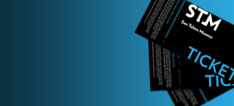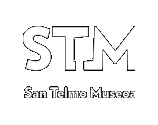- Home
- Exhibitions
- Temporary exhibitions
A Singular Modernity. ‘New Art’ In And Around San Sebastian. 1925-1936
With this exhibition, San Telmo Museum would like to make known some of the most famous contributions to avant-garde art carried out in our immediate artistic context, in an era which would be key to the later development of Basque art, the 1930s. By means of this exhibition, San Telmo Museum continues the work of presenting different facets of the history of Basque art with a renewed and contemporary gaze, a task undertaken in this case by Peio Aguirre, art critic and independent curator, who has placed the so-called "new art" in the local, national and international avant-garde, that is, at the very centre of modernity in the arts.
- From November 5, 2016 to February 5, 2017
- From Tuesday to Sunday, 10:00-20:00. Museum's opening hours
- Admission 6 €.
- Curator: Peio Aguirre
- #STMmodernitatea
This exhibition centres on the current revision of modernism and its narratives. Its content relates to a decisive period of the XX century, the 30s, and its geographical context is in and around the city of San Sebastian. It was a decisive period in both the artistic and cultural sphere; historically it marked a founding moment in Basque art and it was also one of key importance in the development of the Spanish avant-garde. Here one can clearly see the iconic embryo of modernism, characterised by the urban phenomenon and by a coming-together of artists, poets and architects who championed the new, responding to an international exchange of ideas and forming a component part of a western community off which they fed. Important contributing factors included the city’s place as a venue for monarchist tourism and the rise of a leisured bourgeoisie.
San Sebastian is the axis of the exhibition, but there are also connections with Gipuzkoa, Bilbao and Madrid. Moreover, the city's and the province's ways of life are linked, that is to say, the urban and rural.
Catalogue
The catalogue of the exhibition reflects the outcome of the research about this issue. The catalogue and the exihibition complement each other.
The central theme here, is a periodising tracing of the aesthetics, ideas and predispositions that created the essential conditions for the emergence of the new to the surprise, provocation and delight of a mainly bourgeois public.
The exhibition is organised in 13 areas: the new vision, the good life, jazzbandism, the machine age, the old and the new, individual vs. Collective, public sphere, style and dandyism, new objectivity / realism, surrealism, architecture and rationalism, the magazine form and photomontage
As for personal names, the heart of the exhibition is formed by the architech José Manuel Aizpurua and the artist Nicolás de Lekuona; in particular, their modern view through photography. It is the first time that photos taken by them are exhibited together and in dialogue. Jorge Oteiza is as well important in A Singular Modernity as he will be the link between that premier avant-garde and the subsequent generation (the basque school, Gaur group...). Another point to highlight is the fact that it is the first time that the work of the artist of Bilbao María Vallejo is shown.
In addition to those mentioned, these artists are too part of the exhibition: Joaquín Labayen, Eduardo Lagarde, Jesús Olasagasti, Carlos Ribera, Juan Cabanas Erauskin, Gabriel Celaya, Txiki Zabalo...
Guided tours and activities
Get the information about the offer (in spanish)
José Angel Medina Murua, recoge el resultado de la investigación realizada sobre este tema. Es importante subrayar que la exposición y el catálogo son complementarios.
WEB HEADER:
PAGE FOOTER:
Auxiliary menu:
San Telmo Museoa. 2024 copyright ©
HELP WHIT SURFING:














